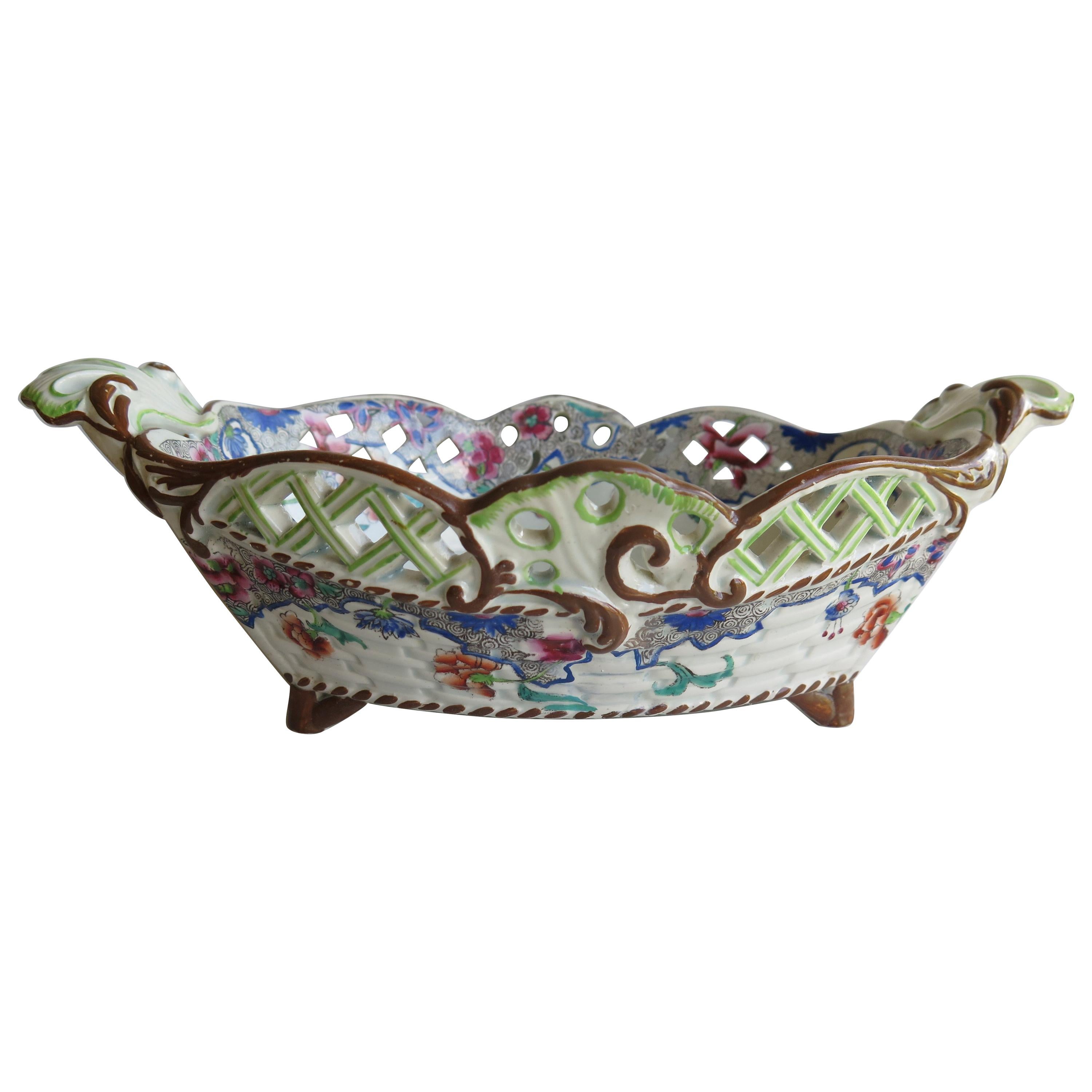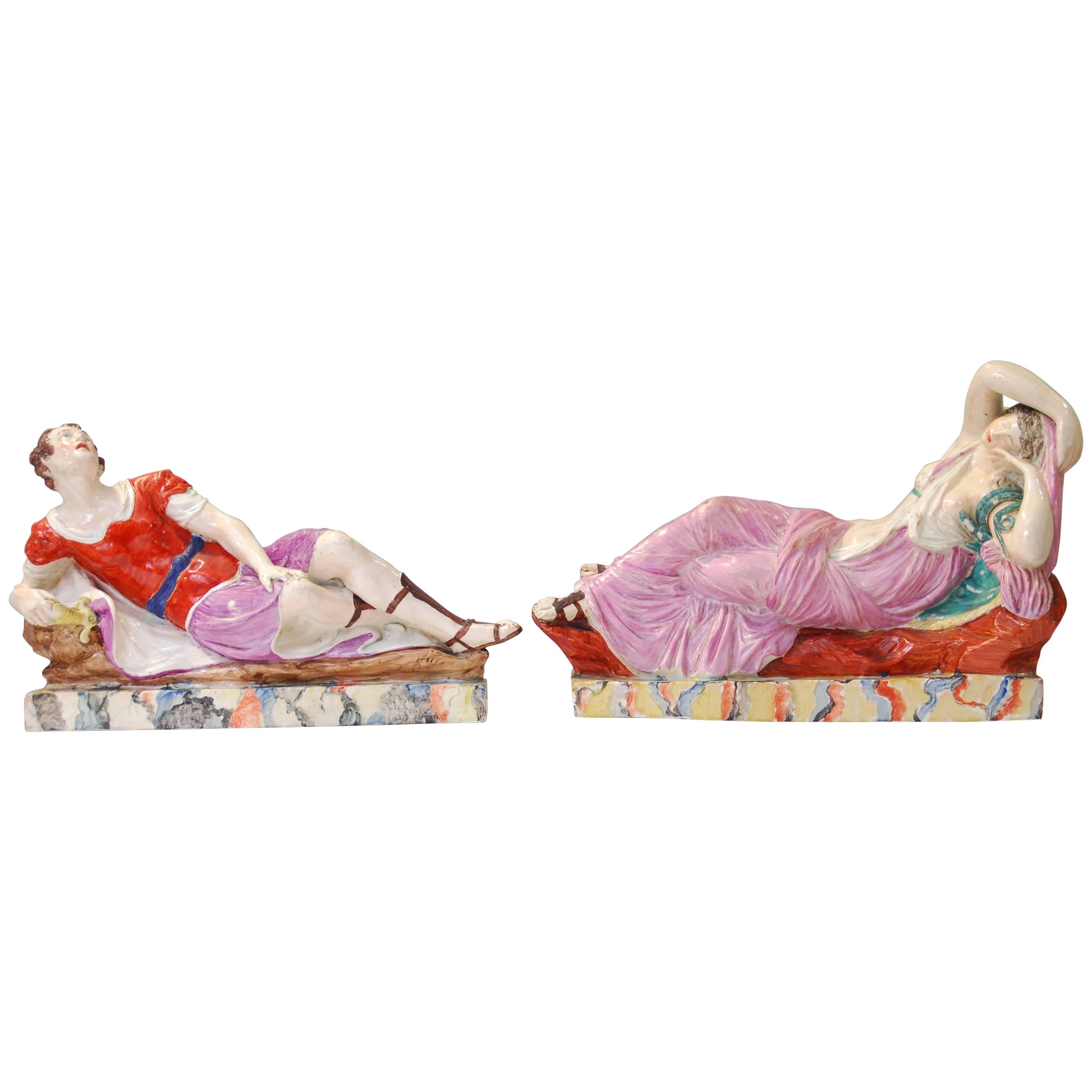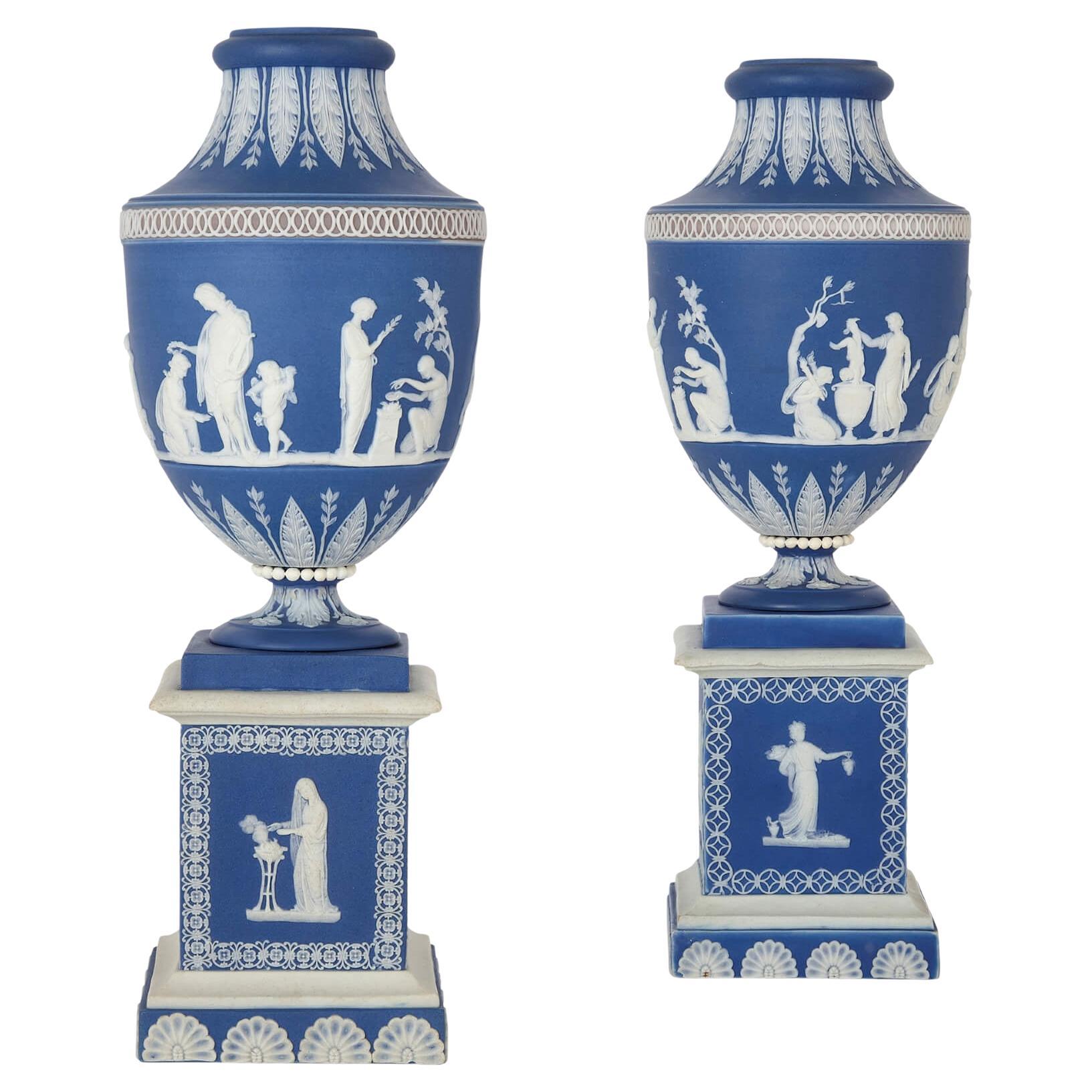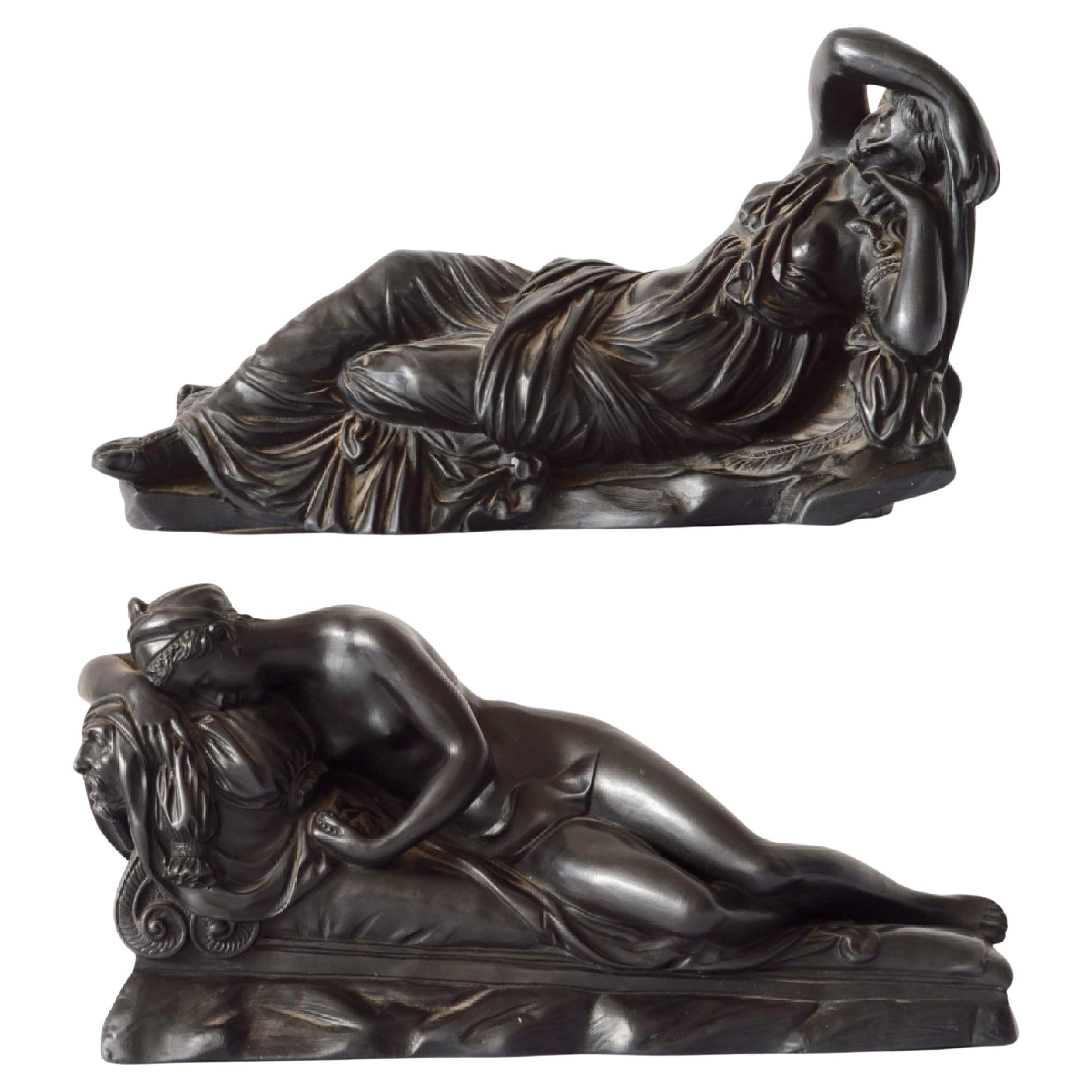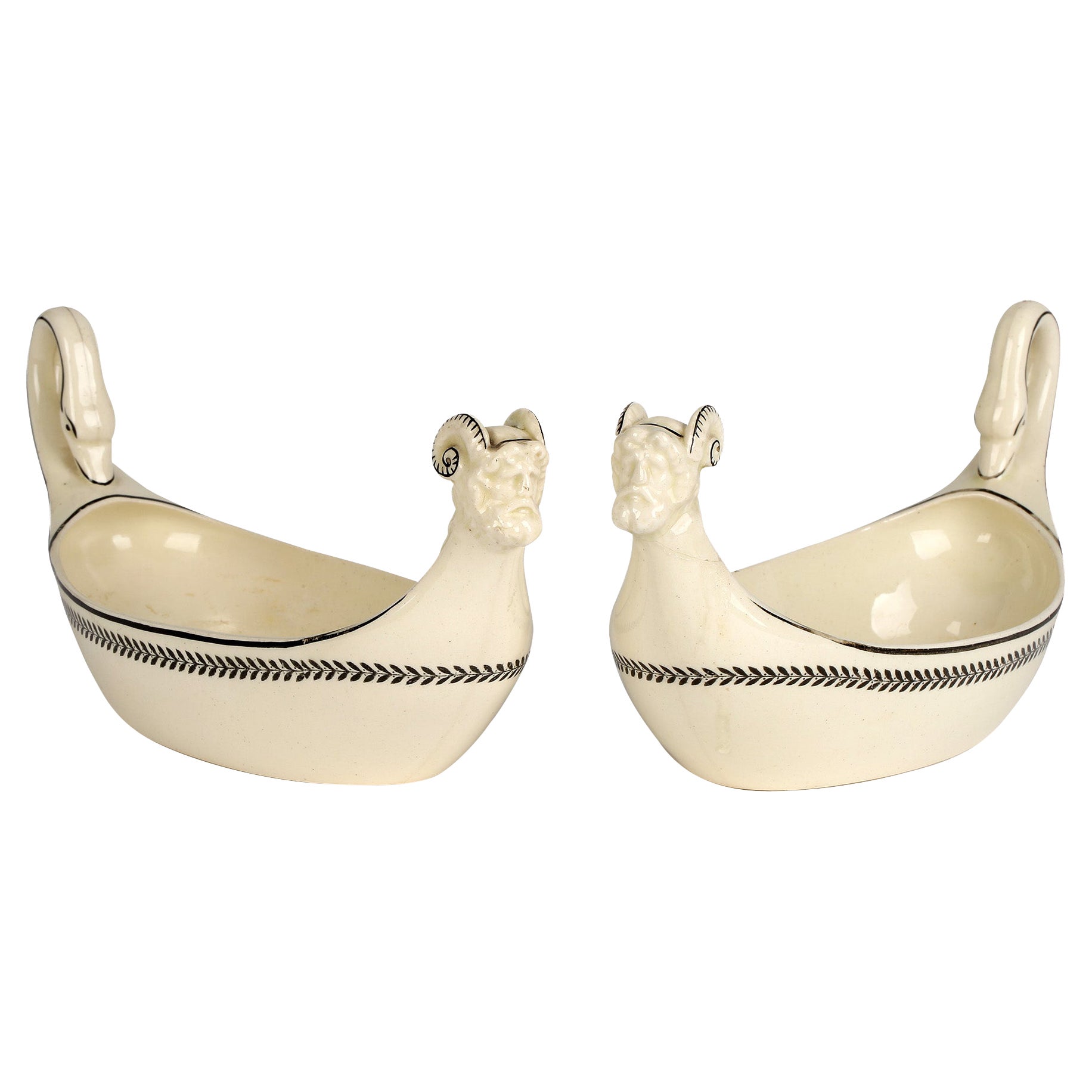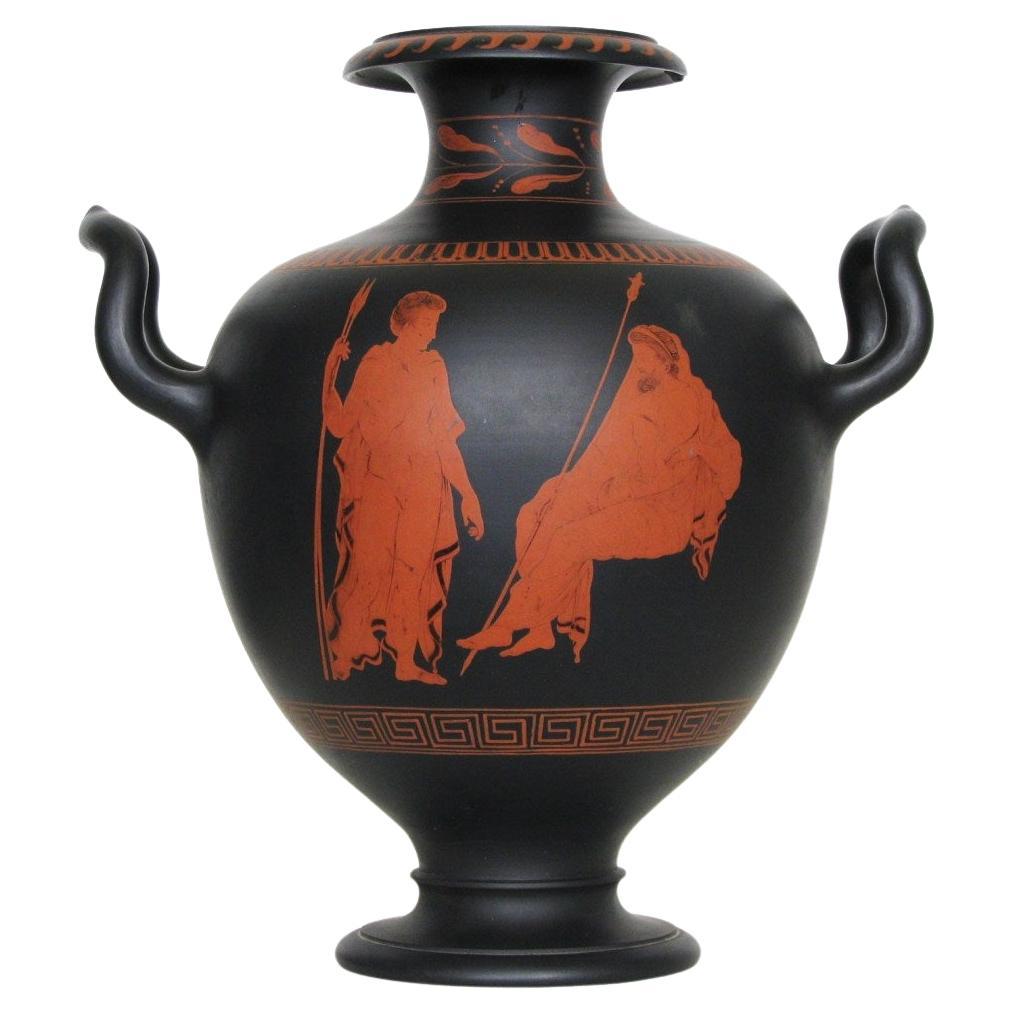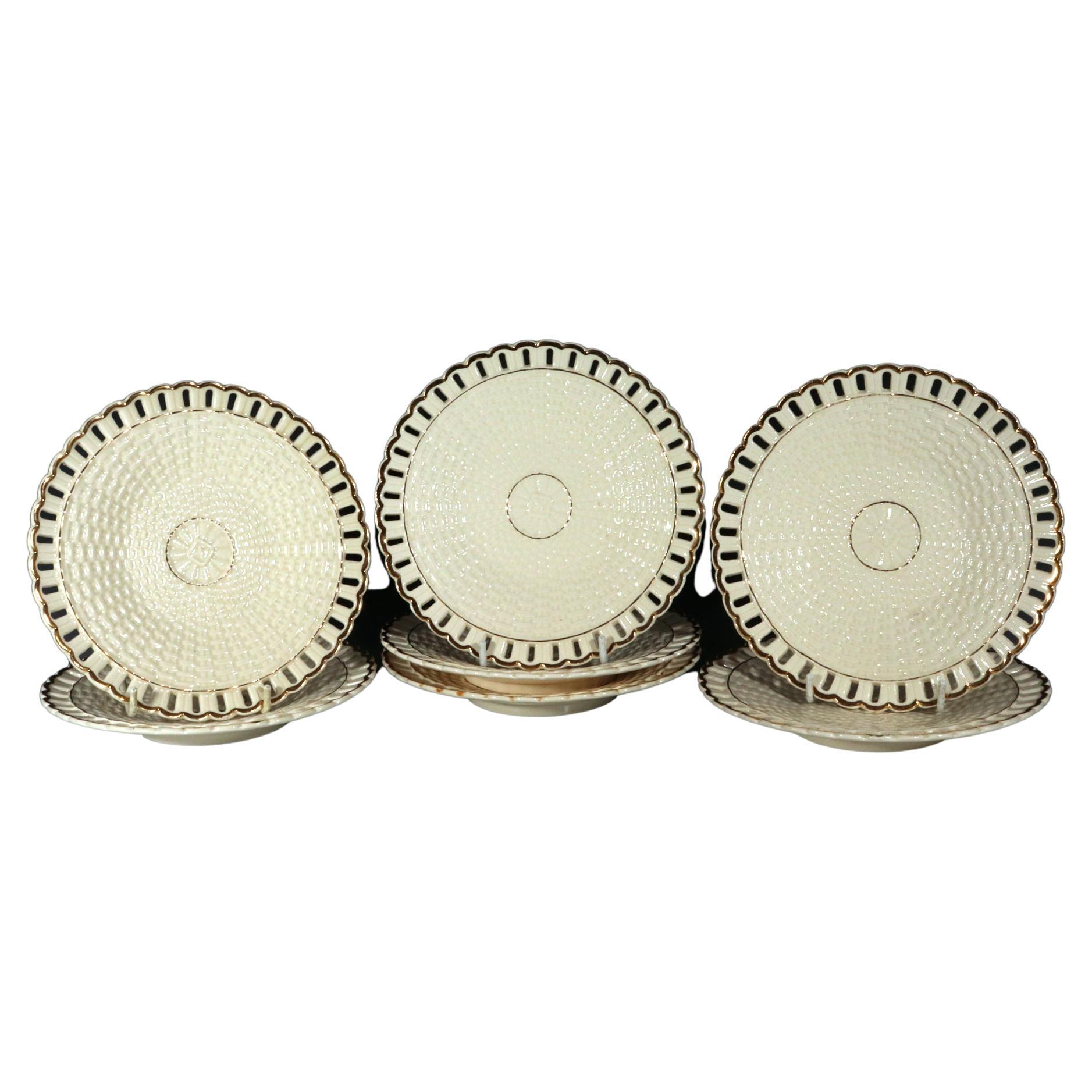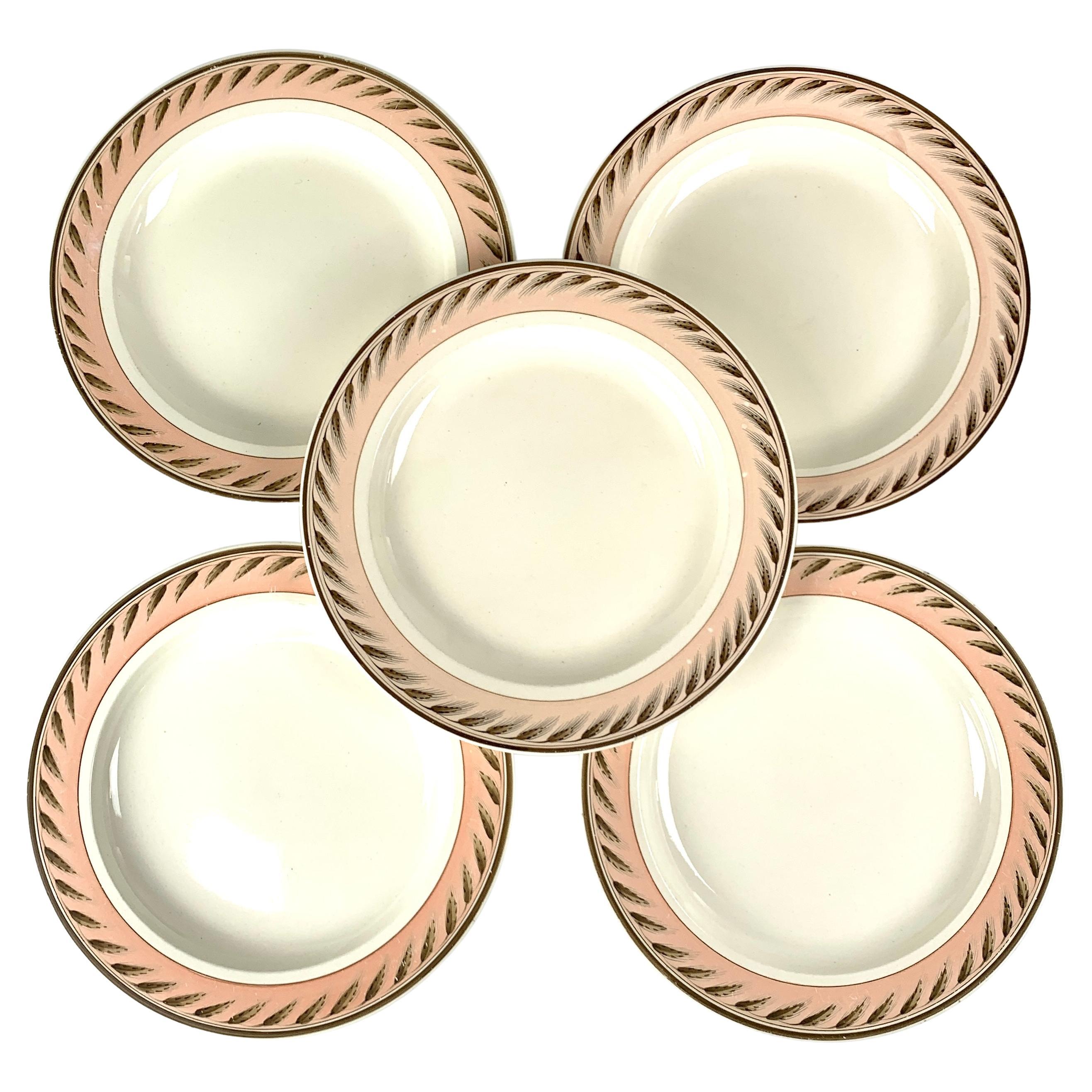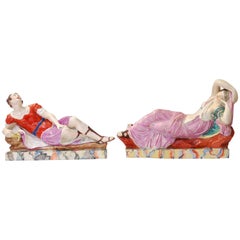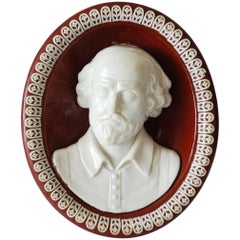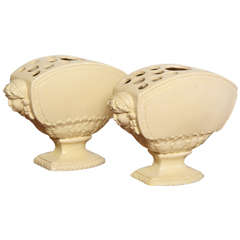
Pair of Creamware Tulipiere Circa 1780
View Similar Items
1 of 9
Pair of Creamware Tulipiere Circa 1780
About the Item
- Creator:Proskau (Maker)
- Dimensions:Height: 6.75 in (17.15 cm)Width: 9.5 in (24.13 cm)Depth: 3.5 in (8.89 cm)
- Sold As:Set of 2
- Materials and Techniques:
- Place of Origin:
- Period:
- Date of Manufacture:Circa 1780
- Condition:Wear consistent with age and use.
- Seller Location:New York, NY
- Reference Number:Seller: 45281stDibs: 1406129483792
You May Also Like
- Antique 18th Century Creamware Covered Box Made circa 1780Located in Katonah, NYWe are pleased to offer this sweet 18th-century English creamware covered box decorated with well-painted sprigs of flowers on the cover and along the sides of the circular box (see ...Category
Antique 1780s English Rococo Pottery
MaterialsCreamware
- Tragic Couple Antony and Cleopatra, Creamware, Ralph & Enoch Wood, circa 1780By Ralph Wood PotteryLocated in Melbourne, VictoriaCleopatra and Mark Antony, in enamelled creamware. After a model by Ralph and Enoch Wood, and quite likely made by this important partnership. The figur...Category
Antique Late 18th Century English Neoclassical Pottery
MaterialsCreamware
$3,040 Sale Price / set20% OffFree Shipping - Creamware Portrait of Shakespeare, Wedgwood, circa 1785By WedgwoodLocated in Melbourne, VictoriaA style of portrait previously unknown, this extraordinarily deep bust of Shakespeare is in creamware, with a cold painted background. William Sha...Category
Antique Late 18th Century English Neoclassical Pottery
MaterialsEarthenware
- Pair of Antique Jasperware Vases by Adams Pottery, circa 1780By William Adams (Potter)Located in London, GBPair of antique jasperware vases by Adams Pottery, circa 1780 English, c. 1780 Height 27cm, diameter 10cm This remarkable pair of neoclassical blue jasperware vases stands as a testament to the sublime artistry and finesse of William Adams, an eminent member of the illustrious Adams pottery family of the 18th century. The vases showcase an exceptional three-dimensional frieze in crisp white relief, vividly portraying scenes from classical mythology. Central to these intricate designs are Apollo, the Greek god of sun and music, and Cupid, the divine symbol of love and attraction. The high-relief technique lends the figures a sense of dynamic realism, setting them vividly against the blue jasperware, and are excellent examples of neoclassical decorations. Complementing the classical friezes are formal borders that encircle the shoulders of each vase. These meticulously crafted embellishments contrast brilliantly with the blue Jasper, accentuating their own elaborate detailing. Adding to the grandeur of these pieces are the tall plinth bases, which are graced by classical figures emblematic of the four seasons, also in white relief. These figures not only augment the classical look of the vases but also represent the perennial cycle of life and the passage of time. The bases also feature classical friezes to the sides and bottom. Each vase proudly bears the unmistakable 'ADAMS' impression, signifying their provenance and certifying their authenticity. This signature mark is a cherished attribution to their creator, William Adams, and his significant contribution to the heritage of pottery. William Adams, a favoured pupil of the legendary Josiah Wedgwood, established his own pottery in 1789 and became renowned for his work with Queensware, painted china glaze ware, transfer ware, basalt, and jasperware until his death in 1805. The Adams family...Category
Antique 18th Century English Neoclassical Pottery
MaterialsOther
- Proskau Faience Tromp L'oeil Jug in the Form of a Parrot, circa 1770By ProskauLocated in Downingtown, PAProskau Faience Jug in the form of a Parrot, circa 1770. The tromp l"oeil tin-glazed earthenware jug is in the form of a parrot with a removable head...Category
Antique Late 18th Century Georgian Pitchers
MaterialsFaience
- Pair of Black Basalt Reclining Figures, Cleopatra and Lucretia, Neale circa 1780By Neale & Co.Located in Melbourne, VictoriaA fine, rare pair of figures in black basalt from the Neale Manufactory. The Neale pottery was founded in 1778 and ran until around 1792. They made very fine wares, and were on good terms with Wedgwood, with whom they combined shipments to the continent. For two similar figures marked for Neale & Co. see Diana Edwards, Black Basalt, Wedgwood and Contemporary Manufacturers, Suffolk, 1994, p. 208, figs. 313 & 314. Cleopatra and Lucretia are two women from different time periods and historical contexts, but are linked by their importance in Roman history, as well as by their tragic ends. Cleopatra was a famous queen of ancient Egypt, who ruled from 51-30 BC. She was the last pharaoh of Egypt and is remembered for her intelligence, beauty, and political savvy. Cleopatra was involved in a romantic relationship with the Roman general and statesman, Julius Caesar, and later with the Roman general and politician, Mark Antony...Category
Antique Late 18th Century English Neoclassical Pottery
MaterialsStoneware
$6,400 Sale Price / set20% OffFree Shipping
Recently Viewed
View AllMore Ways To Browse
Antique Tulipiere
Tulipiere Pair
Collectable Antique
Office Collectables
Antique And Collecting
Antique And Collectables
Antique And Collectible
Antique And Collectable
Antique Collectible Furniture
Antique And Collectible Furniture
Collectable Curiosities
Curiosities Collectible
Curiosities And Collectables
Collectibles And Curiosities
Home Furniture Vintage
Retro Furniture Collectables
Retro Furniture Collectibles
Antique Stand
